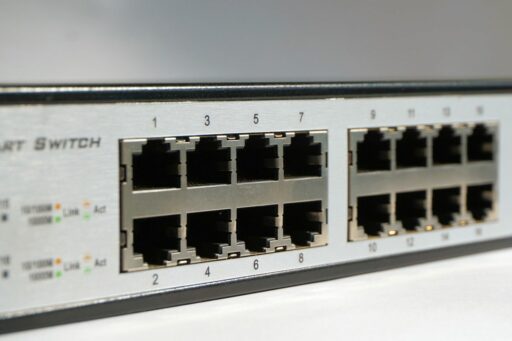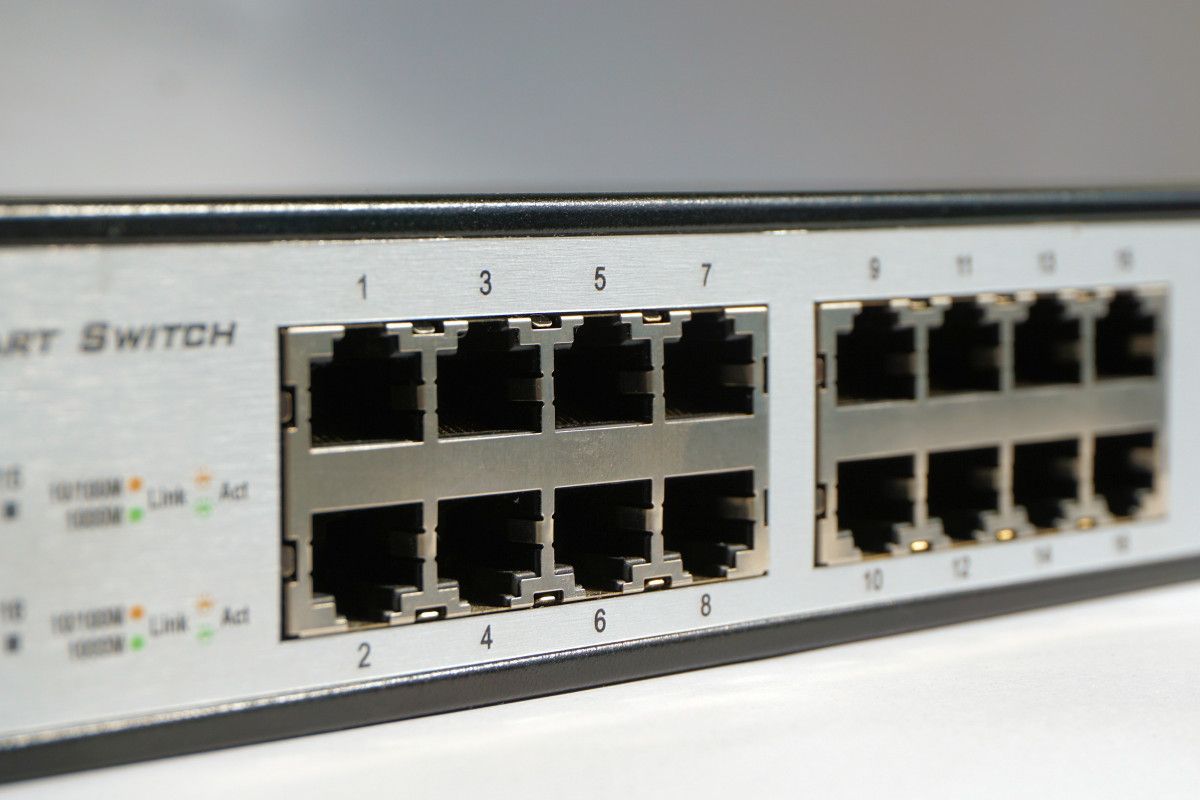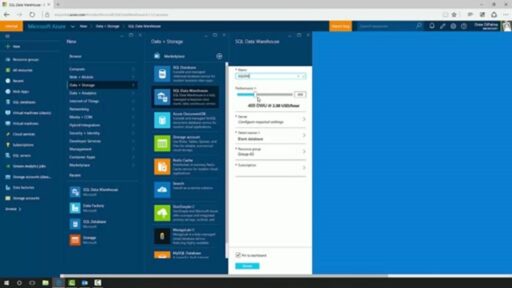Table of Contents
In the ever-evolving landscape of data management, Databricks stands out as a beacon of innovation, offering a unified platform that not only breaks down data silos but also streamlines workflows, accelerates innovation in data science and AI, and ensures governance and performance at cloud scale. This article delves into the transformative capabilities of Databricks, highlighting its role in fostering integration and collaboration among data professionals, ultimately paving the way for the future of data processing.
Key Takeaways
- Databricks Lakehouse Federation provides a unified view of data across an organization, enabling seamless query federation and breaking down data silos.
- The platform offers a cohesive environment for data engineering and science, bolstering scalability, and supporting advanced analytics without the need for context switching.
- Databricks accelerates ad hoc reporting, proof-of-concept work, and AI/ML workloads with MLOps, transforming data into actionable insights.
- With its Unity Catalog and Lakehouse architecture, Databricks ensures robust data governance, privacy, and compliance at cloud scale.
- The integration of Databricks with Snowflake and the use of collaborative workspaces and interactive notebooks epitomize the future of unified data processing.
Breaking Down Data Silos with Lakehouse Federation

Unified View of Data Assets
Achieving a unified view of data assets is a cornerstone of modern data management. By integrating data from various sources, organizations can harness a comprehensive perspective that is crucial for informed decision-making. Databricks Lakehouse Federation plays a pivotal role in this integration, offering a seamless way to access and analyze data without the need for complex ETL processes.
The unified view provided by Databricks not only enhances collaboration but also enables real-time insights and adaptability.
With the Unity Catalog, Databricks ensures that advanced security features, such as row and column level access controls, are consistently applied across all data sources. This approach simplifies the data landscape, making it easier to navigate and govern.
- Unified Data View: Break down data silos for a holistic data perspective.
- Query Federation: Run queries across multiple data sources efficiently.
- Advanced Security: Apply consistent governance with Unity Catalog features.
Query Federation Across Multiple Data Sources
The concept of Query Federation is a game-changer in the realm of data management. By enabling direct queries on external databases, Databricks Lakehouse Federation acts as a bridge, connecting disparate data sources without the need for importing data into the workspace. This approach not only simplifies access but also maintains the integrity and locality of the original data.
Supported Data Sources:
- MySQL
- PostgreSQL
- Amazon Redshift
- Snowflake
- Microsoft SQL Server
- Azure Synapse
- Google BigQuery
- Databricks
By leveraging query federation, organizations can avoid the intricate and time-consuming ETL processes, leading to more agile and immediate insights. This is particularly beneficial when dealing with large volumes of data that would otherwise require extensive resources to consolidate.
The Lakehouse Federation’s support for a wide array of databases ensures that existing data infrastructures are not just compatible, but fully exploitable. This unlocks the potential for comprehensive analytics and decision-making, grounded in a unified view of all organizational data.
Navigating the Labyrinth of Data Silos
In the vast expanse of the data universe, organizations are on a constant quest to conquer their data assets. The challenge is akin to an explorer navigating a labyrinth, where each turn could lead to a dead end or a path forward. Databricks Lakehouse Federation emerges as a beacon of hope, guiding enterprises through the complex maze of data silos.
The federation capability of Databricks provides a unified view of all data across the organization, which is instrumental in breaking down the formidable walls of data silos. This unified approach not only simplifies data access but also paves the way for enhanced data governance.
By leveraging the power of Lakehouse Federation, organizations can ensure that their data is not just stored but is also accessible, secure, and primed for analysis.
The following points highlight the benefits of using Databricks to navigate data silos:
- Seamless integration of disparate data sources
- Enhanced data governance and security
- Simplified access to a comprehensive data landscape
- Accelerated discovery and utilization of hidden data assets
Streamlining Data Workflows with Databricks

Unified Platform for Data Engineering and Science
Databricks stands out as a unified environment for data engineering, data science, and machine learning. This integration eliminates the need for disparate tools, fostering an ecosystem where collaboration and innovation thrive.
By providing a single platform, Databricks streamlines workflows, significantly reducing the expensive context switching and extra steps that typically slow down project momentum.
The platform’s scalability is a key feature, leveraging Apache Spark’s distributed computing to handle large datasets and complex analytics workflows with ease. Here’s a quick overview of its capabilities:
- Unified View of Data: Ensuring all organizational data is accessible in one place.
- Advanced Analytics: Built-in libraries for ML and analytics.
- Scalability: Distributed computing for processing large datasets.
Databricks not only offers these technical advantages but also provides the performance and governance needed to manage and govern data across the analytical lifecycle, all at cloud scale.
Seamless Experience and Context Switching
In the realm of data processing, seamless experience is not just a convenience; it’s a strategic advantage. By eliminating the need for costly context switching, Databricks streamlines workflows, allowing data professionals to focus on innovation rather than navigation. This unified approach integrates various stages of the data lifecycle, from exploration to sharing results, all within a single platform.
The transition from a System of Record to a System of Engagement and Experience (SOE2) marks a significant shift in data management. It fosters collaboration and real-time insights, transforming business processes and enhancing user-centric experiences.
The Unity Catalog within Databricks further exemplifies this seamless experience. It extends advanced security features, such as row and column level access controls, and discovery features like tags and data lineage across external data sources. This ensures consistent governance and a unified view of data assets, as illustrated below:
- Advanced security features across data sources
- Discovery features enabling consistent governance
- Data lineage providing a clear trail of data transformations
By integrating real-time data, Databricks enables personalized experiences and predictive insights, which are crucial for customer-centric approaches and proactive services. The result is a comprehensive and adaptable platform that not only manages data but also transforms it into actionable insights.
Scalability and Advanced Analytics
Databricks’ architecture is designed to handle the ever-growing data demands of modern businesses. Scalability is at the core, with the ability to process large datasets efficiently, thanks to Apache Spark’s distributed computing capabilities. This ensures that as data volume grows, performance remains optimal without compromising on cost-efficiency.
Advanced analytics is another cornerstone of the Databricks platform. With built-in libraries for machine learning and predictive modeling, Databricks empowers organizations to unlock deep insights from their data. The platform’s advanced analytics capabilities include but are not limited to:
- Predictive modeling
- Real-time analytics
- Machine learning workflows
Databricks provides a seamless experience that eliminates expensive context switching and extra steps, allowing data teams to refine data into revolutionary insights—all in one place.
The integration with Snowflake further enhances these capabilities, enabling fast query execution and secure data sharing that pave the way for innovative business opportunities and collaboration.
Accelerating Innovation in Data Science and AI

Ad Hoc Reporting and Proof-of-Concept Work
In the dynamic world of data science, ad hoc reporting and proof-of-concept work are crucial for testing the waters before diving into full-scale projects. These preliminary stages allow data teams to explore the potential of new ETL pipelines or reports, supporting workloads during incremental development phases.
The exploratory phase is a sandbox where creativity meets data, enabling teams to iterate rapidly and refine their approaches without the constraints of production environments.
Databricks facilitates this process by providing a suite of tools designed to enhance productivity and collaboration among data scientists and engineers. With features like POSIT WORKBENCH and POSIT CONNECT, teams can leverage their preferred IDEs and frameworks to schedule, share, and scale their exploratory work seamlessly.
The table below outlines the key components that support ad hoc reporting and proof-of-concept work within the Databricks environment:
| Feature | Description |
|---|---|
| POSIT WORKBENCH | Managed environments with preferred IDEs and tools. |
| POSIT CONNECT | Frameworks for scheduling, sharing, and scaling work. |
| POSIT PACKAGE MANAGER | Access to validated Python and R packages for reproducible results. |
Running AI/ML Workloads with MLOps
Databricks provides a robust environment for running AI/ML workloads with an emphasis on MLOps, ensuring that machine learning operations are as streamlined and efficient as possible. The Databricks Runtime for Machine Learning (Databricks Runtime ML) is a key component in this process, automating the creation of clusters with pre-built machine learning and deep learning libraries, which significantly reduces the time and complexity involved in setting up a machine learning environment.
By utilizing MLOps within Databricks, teams can focus on the innovation and refinement of their AI models rather than the operational overhead. This leads to a faster iteration cycle and a quicker path from development to production.
The integration of Bring Your Own Model (BYOM) capabilities further enhances the flexibility of the platform. Organizations can easily integrate their custom AI models, leveraging the Einstein Trust layer for secure and harmonized access to customer data. This not only maximizes the ROI on existing AI investments but also allows for seamless scalability and adaptability to evolving business needs.
Here are some of the key benefits of using Databricks for AI/ML workloads:
- Automated cluster creation with essential ML libraries
- Streamlined operations with MLOps practices
- Secure integration of custom models with BYOM
- Access to harmonized data for model training and fine-tuning
- Scalability to handle large data workloads with cloud-based clusters
Refining Data into Revolutionary Insights
In the realm of data science and AI, the transformation of raw data into actionable insights is paramount. Databricks excels in refining data as it moves through layers of staging and transformation, enabling businesses to unlock revolutionary insights. This process is not just about analytics; it’s about fostering an environment where data informs every decision, leading to strategic advantages and innovation.
- Create Identity Resolution: Building a unified view of customers.
- Analyze and Predict: Leveraging AI/BI for insights like churn score and lifetime value.
- Activating Data: Enhancing customer experiences across all touchpoints.
The journey from data to insight is a meticulous one, requiring tools that can handle the complexity of modern data ecosystems. Databricks provides such a toolkit, ensuring that data is not only processed but also transformed into a strategic asset.
The integration of advanced analytics techniques is crucial for organizations aiming to stay ahead. By applying machine learning and AI, companies can move beyond limited analytical capabilities and rigidity, adapting swiftly to new data-driven opportunities.
Governance and Performance at Cloud Scale
Data Lakehouse: A Safe Haven for Data
In the realm of data management, the Databricks Lakehouse Federation stands as a beacon of integration, offering a unified platform that simplifies the complexities of handling diverse data sources. With its ability to connect to a plethora of databases such as MySQL, PostgreSQL, and Snowflake, among others, it ensures that organizations can seamlessly access and manage their data.
The Lakehouse Federation is not just a tool; it’s a paradigm shift in data strategy, enabling a more agile and informed decision-making process.
The Unity Catalog serves as the compass for navigating this federation, providing a clear map of data lineage and access control. This transparency is crucial for maintaining data integrity and trust across the enterprise.
Benefits of Databricks Lakehouse Federation:
- Unified data management
- Simplified access to multiple data sources
- Enhanced data governance and lineage tracking
- Accelerated insights and decision-making
By embracing the Lakehouse Federation, organizations can transform their data into a strategic asset, unlocking the treasure trove of insights that drive innovation and business success.
Databricks Unity Catalog: Navigating Lakehouse Federation
The Databricks Unity Catalog is at the heart of Lakehouse Federation, offering a unified governance solution that streamlines the management of data and AI. With the Unity Catalog, data teams can effortlessly discover, query, and govern data across diverse platforms without the need to relocate or duplicate datasets.
The Unity Catalog’s Lakehouse Federation capabilities enhance the efficiency of data operations, enabling seamless access to a multitude of data sources.
By leveraging the Unity Catalog, organizations can bypass the complexities of data silos and embrace a more cohesive data strategy. The catalog supports a variety of databases, such as MySQL, PostgreSQL, Amazon Redshift, and Snowflake, facilitating a versatile approach to data access and integration.
Here are some of the key benefits of using Databricks Unity Catalog for Lakehouse Federation:
- Simplified data governance and compliance
- Accelerated ad hoc reporting and proof-of-concept work
- Enhanced query federation across multiple data sources
The Unity Catalog not only empowers teams with top data visualization tools but also integrates with Azure Data Studio features, ensuring efficient database management and a robust data processing environment.
Ensuring Data Privacy and Compliance
In the era of stringent data regulations, Databricks on AWS ensures that organizations can meet their privacy and compliance obligations with ease. Access to comprehensive audit logs allows for meticulous monitoring of user activities, which is crucial for maintaining a robust data governance framework. These logs detail usage patterns, providing transparency and accountability that are essential for regulatory compliance.
- Audit Logs: Detailed records of user activities.
- Data Policy Management: Layered approach to safeguard data.
- Regulatory Compliance: Adherence to global standards.
Databricks’ commitment to data privacy and compliance is further reinforced by its data policy management layer, which is instrumental in securing data and meeting global compliance standards.
The Scroll of Data Lineage and Access Control is a testament to Databricks’ dedication to governance. By managing and auditing data access for all federated queries, Databricks ensures a clear lineage and adherence to data regulations. This is achieved through precise control mechanisms such as GRANT and REVOKE SQL commands, which regulate access to federated tables and maintain the integrity of data workflows.
Integration and Collaboration: The Future of Data Processing

The Synergy Between Snowflake and Databricks
The integration of Snowflake and Databricks brings together the strengths of both platforms, offering enhanced scalability, performance, and advanced analytics capabilities. Organizations can unlock the full potential of their data by leveraging the combined features of Snowflake’s cloud data warehousing and Databricks’ unified analytics platform. This synergy not only facilitates actionable insights but also drives innovation across various sectors.
In the ever-evolving landscape of data analytics and cloud computing, the harmonious collaboration between Snowflake and Databricks stands as a testament to the power of strategic integration in the pursuit of data-driven success.
The benefits of this integration are particularly evident in the following areas:
- Seamless Data Pipeline: The integration enables efficient data extraction, transformation, and loading (ETL) processes.
- Scalability and Performance: Combining Snowflake’s scalable compute resources with Databricks’ distributed computing capabilities offers unparalleled performance for processing large datasets.
As the data landscape continues to evolve, embracing the synergy of Snowflake and Databricks integration can be a game-changer for sectors looking to harness the power of big data.
Collaborative Workspaces for Data Teams
In the realm of data processing, collaboration is the cornerstone of innovation. Databricks’ collaborative workspaces are designed to foster teamwork, allowing data professionals to share code, notebooks, and insights in real-time. This shared environment not only enhances productivity but also ensures that team members are always on the same page, leading to more cohesive and robust data solutions.
- Seamless integration with various data sources and tools
- Real-time sharing of code, notebooks, and visualizations
- A unified platform that supports a diverse range of data workloads
The collaborative workspace is more than a feature; it’s a paradigm shift in how data teams operate, enabling a level of synergy that accelerates the path from data to discovery.
The adaptability of Databricks workspaces to different project needs—from ad hoc reporting to the development of new ETL pipelines—ensures that teams can move swiftly from exploration to execution. By eliminating costly context switching and streamlining workflows, Databricks provides a seamless experience that is crucial in today’s fast-paced data landscape.
The Role of Interactive Notebooks in Data Collaboration
Interactive notebooks have become a cornerstone in the realm of data collaboration, offering an environment where data professionals can work together in real time. Databricks’ interactive notebooks foster a culture of transparency and collective problem-solving, which is essential in today’s fast-paced data-driven world.
The integration of interactive notebooks within Databricks provides a multitude of benefits:
- Real-time collaboration among team members
- Easy sharing of code, results, and visualizations
- A unified environment that reduces context switching
By enabling a shared workspace, interactive notebooks facilitate a more dynamic and efficient approach to data analysis and model development.
Moreover, the synergy between tools like Snowflake and Databricks enhances the collaborative experience, allowing data scientists and business analysts to work in tandem. This integration not only streamlines workflows but also enables real-time insights and a more adaptable data strategy.
Conclusion
As we have journeyed through the realms of data processing and management, Databricks Lakehouse Federation has emerged as a beacon of innovation, guiding organizations to the treasure of unified data access. By breaking down the barriers of data silos and offering a scalable, unified platform for data engineering, science, and machine learning, Databricks empowers teams to streamline workflows, accelerate innovation, and harness the full potential of their data assets. The collaborative environment fostered by Databricks not only simplifies the analytical lifecycle but also propels businesses towards a future where data-driven decisions are made with confidence and agility. The quest for seamless data integration and governance may be challenging, but with Databricks Lakehouse Federation, organizations are well-equipped to navigate this complex landscape and emerge victorious in the age of big data.
Frequently Asked Questions
What is Databricks Lakehouse Federation?
Databricks Lakehouse Federation is a feature that provides a unified view of all data across an organization, enabling seamless access and query federation across multiple data sources, thereby breaking down data silos.
How does Databricks streamline data workflows?
Databricks streamlines data workflows by offering a unified platform for data engineering, data science, and machine learning. It eliminates the need for separate tools, reduces context switching, and supports scalability and advanced analytics.
What are the benefits of using Databricks for AI and machine learning?
Databricks facilitates AI and machine learning by allowing ad hoc reporting, proof-of-concept work, and running AI/ML workloads with MLOps, enabling quick insights and efficient model development.
How does Databricks ensure data governance and performance at scale?
Databricks ensures governance and performance through features like the Data Lakehouse, which offers a secure environment for data, and the Unity Catalog, which provides governance across the Lakehouse Federation, all at cloud scale.
Can Databricks collaborate with other platforms like Snowflake?
Yes, Databricks can integrate and collaborate with platforms like Snowflake, enhancing the power of data processing and analytics through combined capabilities.
What role do interactive notebooks play in Databricks?
Interactive notebooks in Databricks provide a collaborative workspace for data teams to process, analyze, and visualize data, fostering seamless collaboration among data scientists and engineers.





